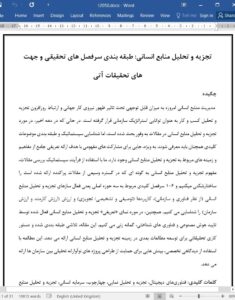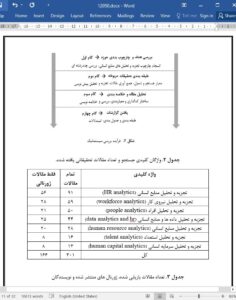Abstract
The management of human resources is today significantly impacted by the emergence of the global workforce and the increasing relevance of business analytics as a strategic organizational capability. Whereas human resources analytics has been largely discussed in literature in the last decade, a systematic identification and classification of key topics is yet to be introduced. In particular, there is room for conceptual contributions aiming to provide a comprehensive definition of concepts and investigation areas related to HR analytics. Using a systematic literature review process, we deconstruct the concept of human resources analytics as presented in a vast although fragmented literature, and we identify 106 key research topics associated to three major areas, i.e. enablers of HR analytics (technological and organizational), applications (descriptive and diagnostic/prescriptive), and value (employee value and organizational value). We also speculate on an “exponential” view of HR analytics enabled by the affirmation of artificial intelligence and cognitive technologies. The article provides a large systematization effort and a research agenda for developing further studies in the field of HR analytics. By a practitioner perspective, the study offers insights to support the design of innovative analytics projects within organizations.
1. Introduction
The increasing relevance of business analytics as a strategic organizational capability has encouraged the development of datadriven human resource management and advanced analytics systems able to integrate employee performance with business value drivers (Becker, Huselid, & Ulrich, 2001; LinkedIn, 2018; van der Togt & Rasmussen, 2017) and business performance (Guenole, Ferrar and Feinzig, 2017). The process aimed to internally examining human resources management activities has been labelled using different concepts (van der Laken, Bakk, Giagkoulas, van Leeuwen, & Bongenaar, 2018). These include people analytics (Green, 2017; Kane, 2015), human resources analytics (Lawler, Levenson, & Boudreau, 2004; Levenson, 2005; Rasmussen & Ulrich, 2015), workforce analytics (Hota & Ghosh, 2013; Simon ´ & Ferreiro, 2018), talent analytics (Davenport, Harris, & Shapiro, 2010), and human capital analytics (Andersen, 2017; Minbaeva, 2017, 2018; Levenson & Fink, 2017; Schiemann, Seibert, & Blankenship, 2017). Although with different perspectives, all the concepts refer to the approach to managing people within organizations and making more objective, rational and effective decisions about employees based on the analysis of data.











